Table of Contents
Points Miles and Bling (blog) contains referral or affiliate links. The blog receives a small commission at no additional cost to you. Thank you for your continued support. Credit Card issuers are not responsible for maintaining or monitoring the accuracy of information on this website. For full details, current product information, and Terms and Conditions, click the link included.
Have you ever seen an airfare deal that you wish you could jump on, but it’s not departing from your home airport? Have you wanted to fly a specific airline but been swayed away by its route being less than ideal? Have you been influenced by self-proclaimed influencers on social media and felt the FOMO (Fear Of Missing Out)? With the art of flight positioning, you can give into your FOMO and jump on that illustrious deal or award redemption opportunity.
Is Flight Positioning an Art?
As countless articles on the internet will tell you, flight positioning is taking a flight for the sole purpose of getting you to another airport to start your trip. Simple enough definition, right? Yes, but the application of it must be made correctly. I recently had a friend miss his first-class flight because he didn’t consider variables that could impact his positioning flight, hence the spark for this article.
So, what are the variables to consider before booking a positioning flight? An obvious one is leaving enough time between flights. But how would you handle a delay? How would you handle a canceled flight? Do you plan on traveling with checked luggage? And most importantly, what’s the consequence of missing the flight?
Coming up with creative techniques to mitigate potential risks is what I call the Art of Flight Positioning.
The 12-Step Strategy
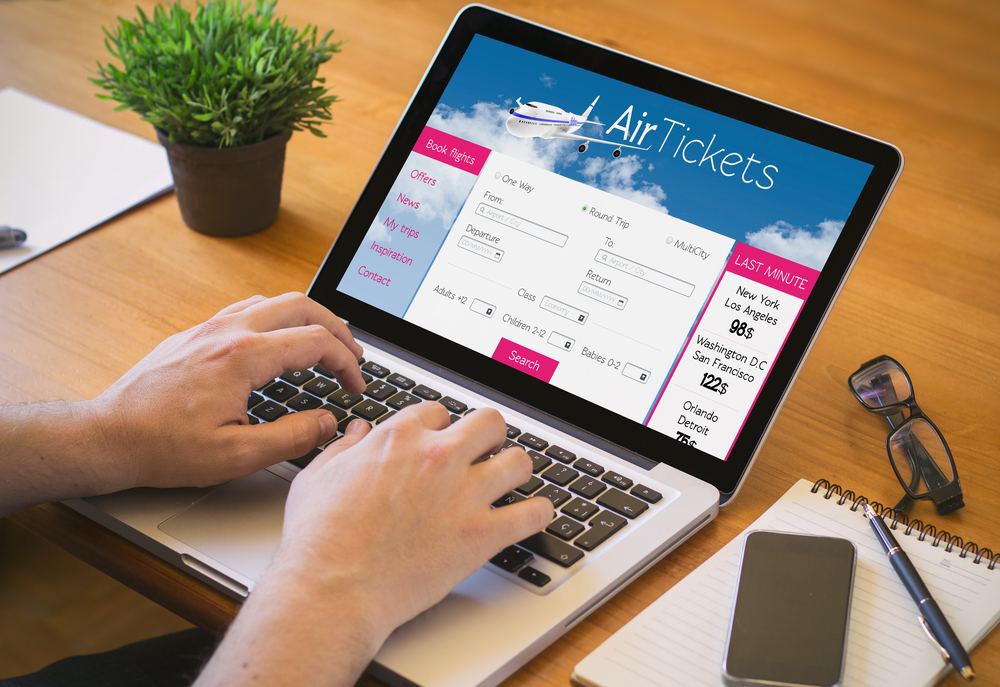
Image from: McLittleStock/shutterstock
You found a deal or a rare first-class award availability and feel the FOMO to book it. Well, book it! Bookings can be canceled for free within 24 hours.
The next logical step would be to search on Google Flights for positioning flight options, but this is not the way. We must begin by asking fundamental questions before moving on to flight searches. I will walk you through my process of determining which positioning flights to book while taking into consideration the following risks.

Flight Positioning – Potential Risks
Step 1: Seasonality
What season of the year do you plan to fly? If you live in the northern hemisphere, you succumbed to winter storms and are well aware of the impact these storms can have on travel. If you plan on traveling during the winter months, you must have a foolproof strategy and we’ll discuss this later.
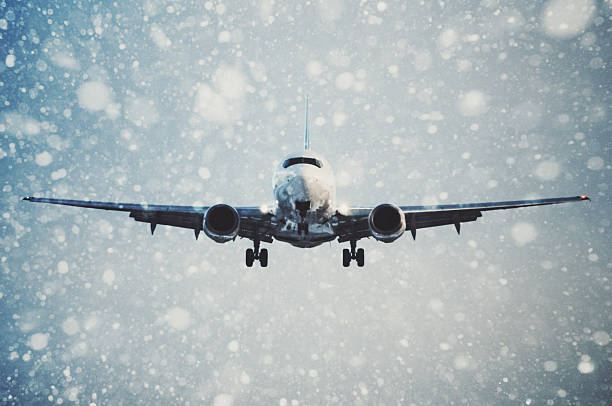
A passenger jet prepares for landing in heavy snowfall. Image from: Getty Images
, as there is always the possibility of a storm on your intended day of travel. Even a light storm can disrupt travel plans.
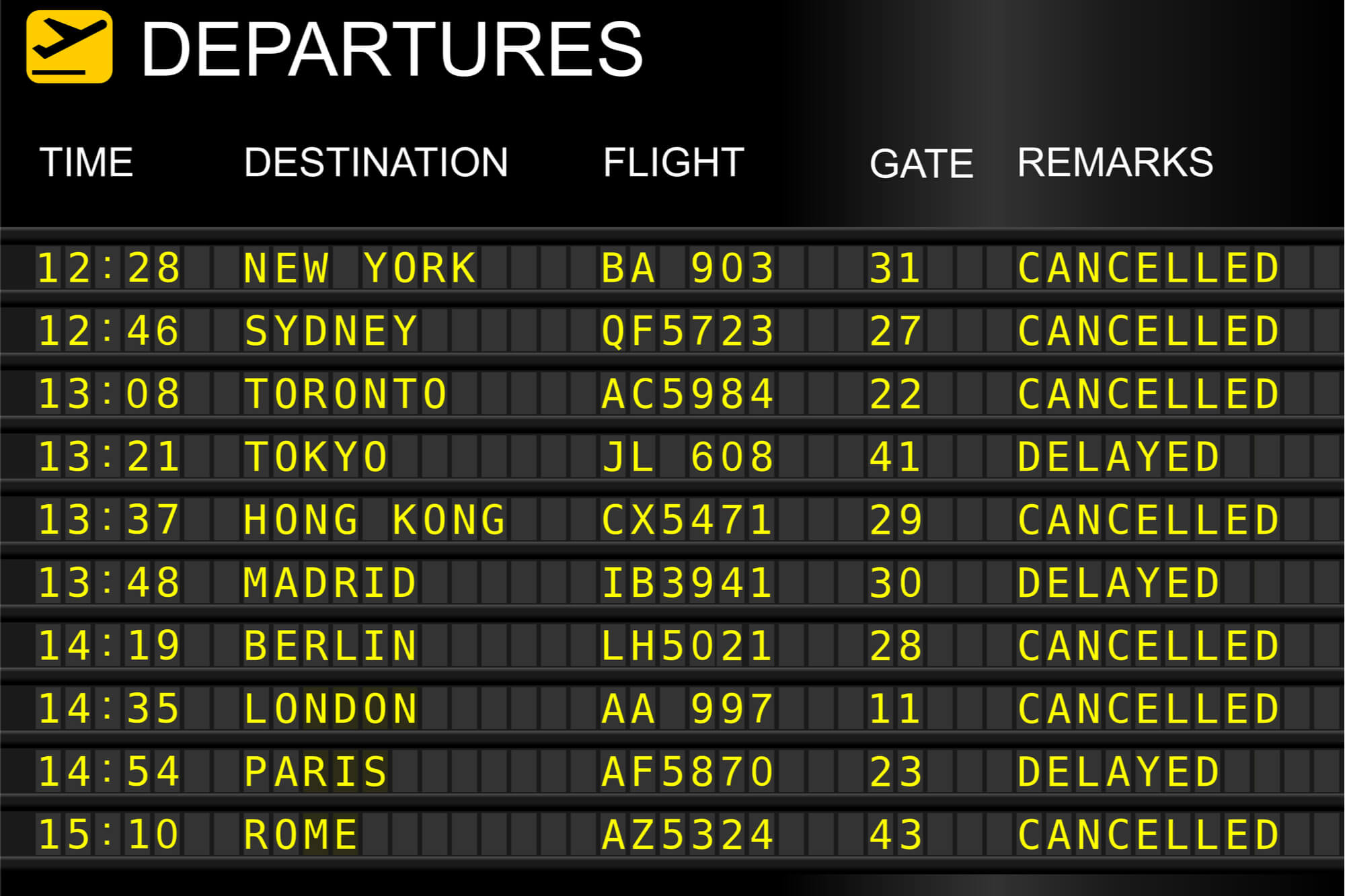
image from: CanStock
Step 2: Baggage
Do you plan to check in a bag? If so, you must assume your bag will not be checked to your destination, as you are on two separate tickets. Your friend or the Internet might tell you otherwise, but do you want to risk it? Assume you must collect your bag and re-check it, which adds time. I like to allocate an hour to collect bags as this is the worst-case scenario I have experienced (in Orlando!).
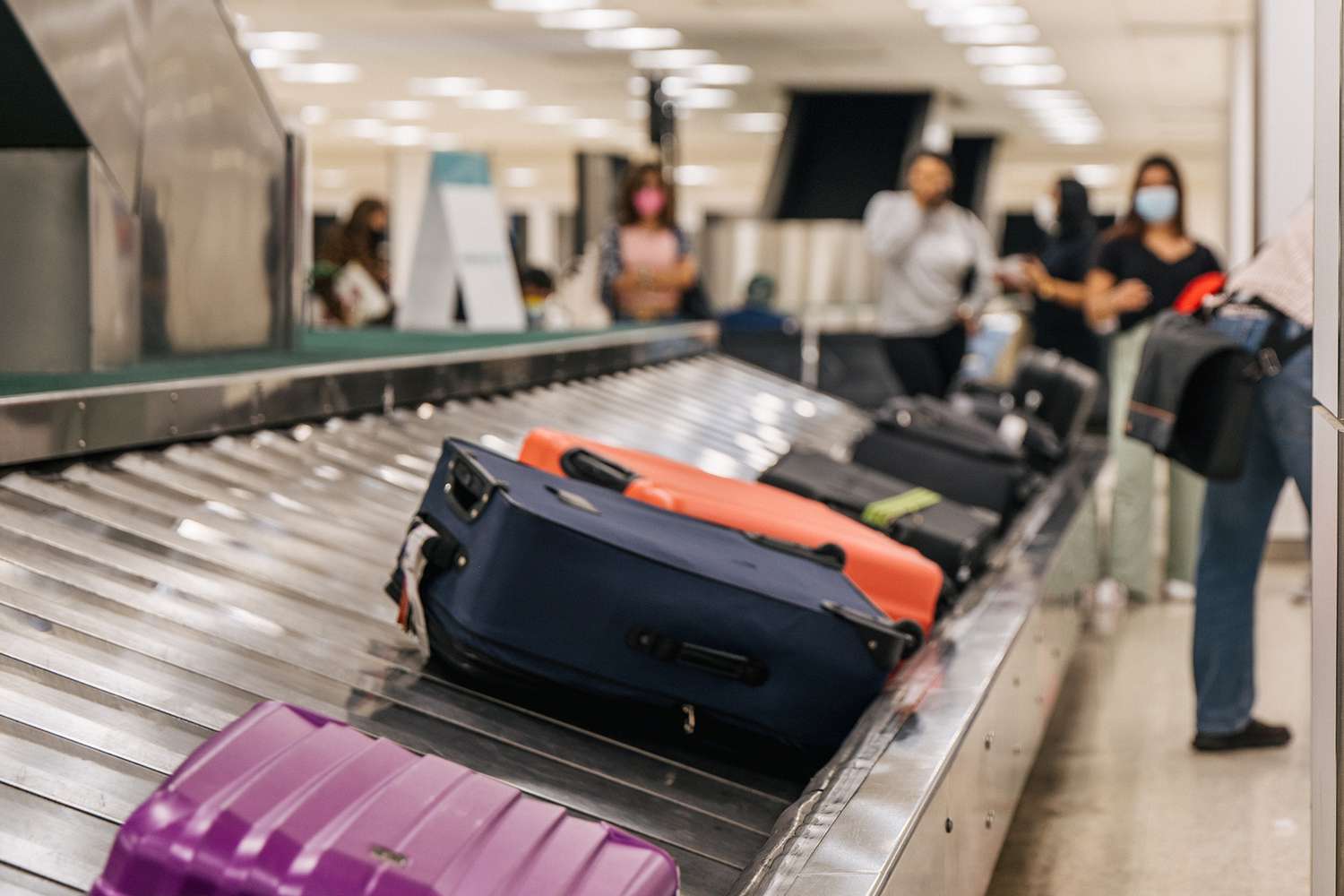
image from travelandleisure.com
Lastly, there is always a chance that your bag never arrives! This risk can be mitigated by traveling with only a carry-on or taking direct flights, which we’ll discuss later.
Step 3: Point Balances
Knowing your frequent flyer award balances in various award programs will be essential when booking your positioning flight. I always recommend booking with points rather than cash, as it will generally provide the greatest flexibility to change/cancel with no or minimal charges.
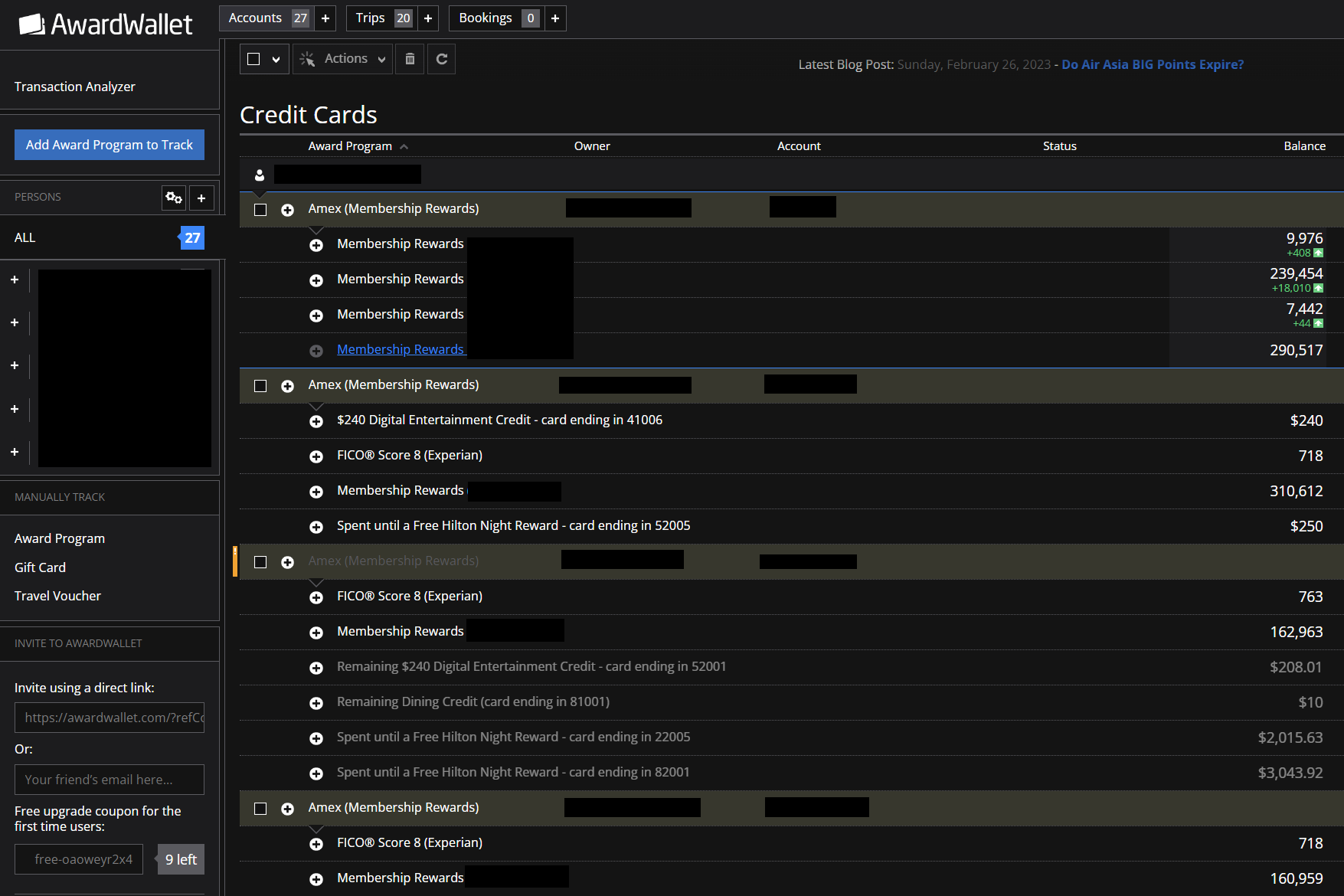
AwardWallet – an application to track award point balances.
Booking on points also opens the door to booking more than one positioning flight, which is the core technique to mitigate all the potential positioning risks. As we move forward and examine other factors/risks, consider this technique and think about creative ways to overcome it.
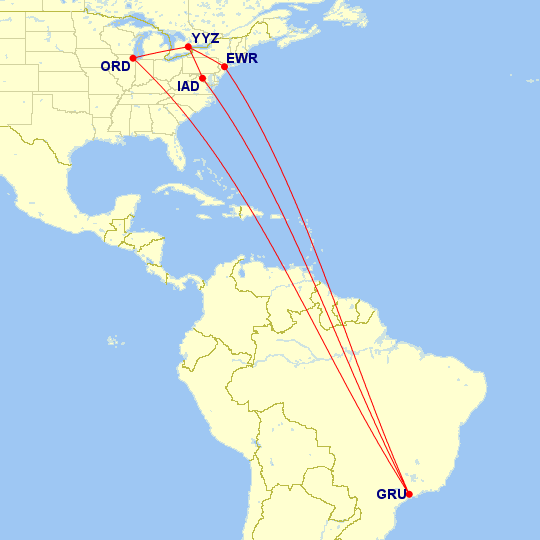
Booking multiple positioning flights from Toronto (YYZ) to Sao Paulo (GRU)
Step 4: Flight Search
Regardless of how you intend to pay for your flights (points vs. cash), start with Google Flights to get a sense of:
- Flight schedules
- Airlines
- Flight frequency
- Flight routings
Let’s take an example of flights between Ottawa (YOW) and New York (LGA, EWR, and JFK). Google Flights show us over 240 possible options!
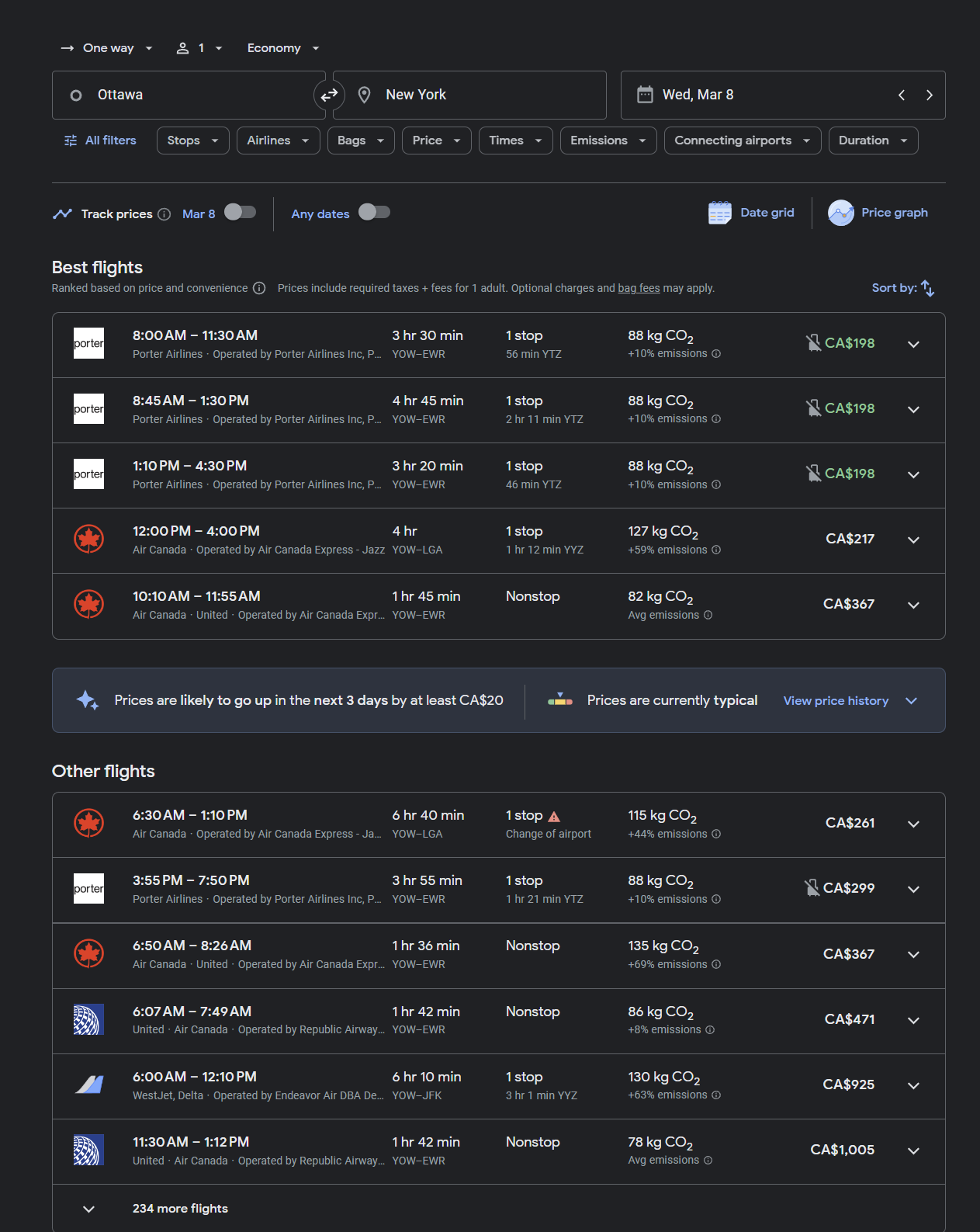
We now need to filter this list down.
Step 5: Routing
The first step in filtering down the search results is only to show direct flights. Why only direct? Booking direct flights removes much of the risk involved in positioning. This includes a much lower probability of losing your bag through an otherwise connection or missing the flight connection entirely.
If multiple airports are within a short vicinity of our city, include them in your search. In the example below, flight searches are done from Ottawa and Montreal, which is a large Air Canada hub and is only a 2-hour drive away. You can see the stark difference in the available direct flights.
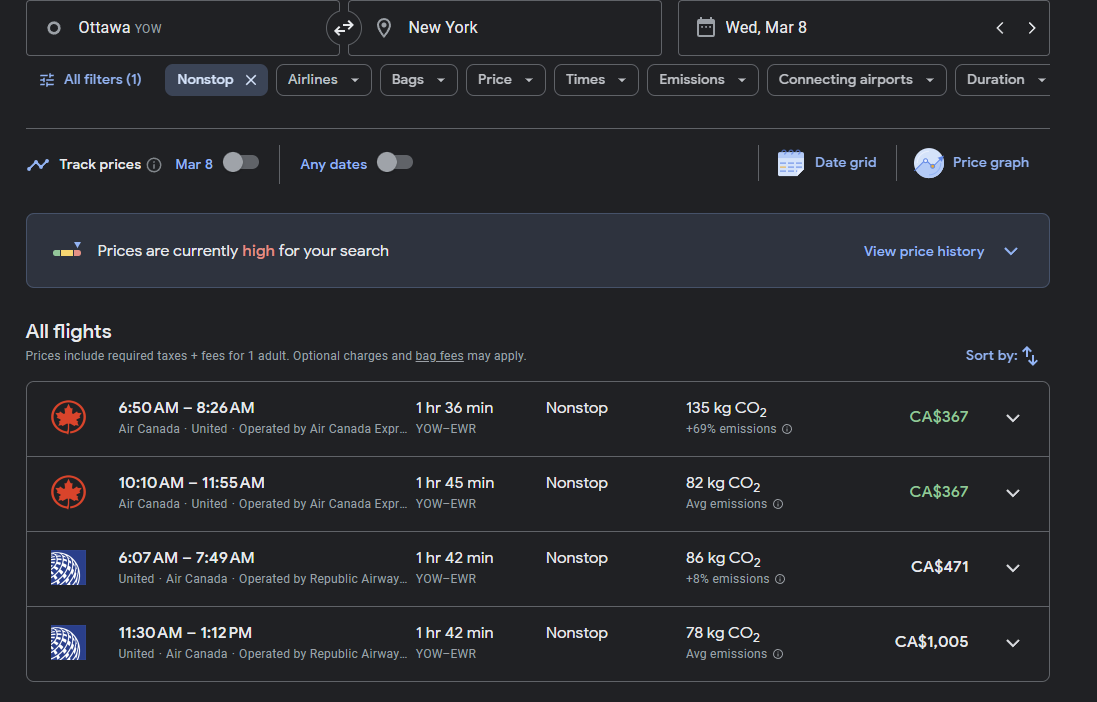
Ottawa to New York Direct Flights
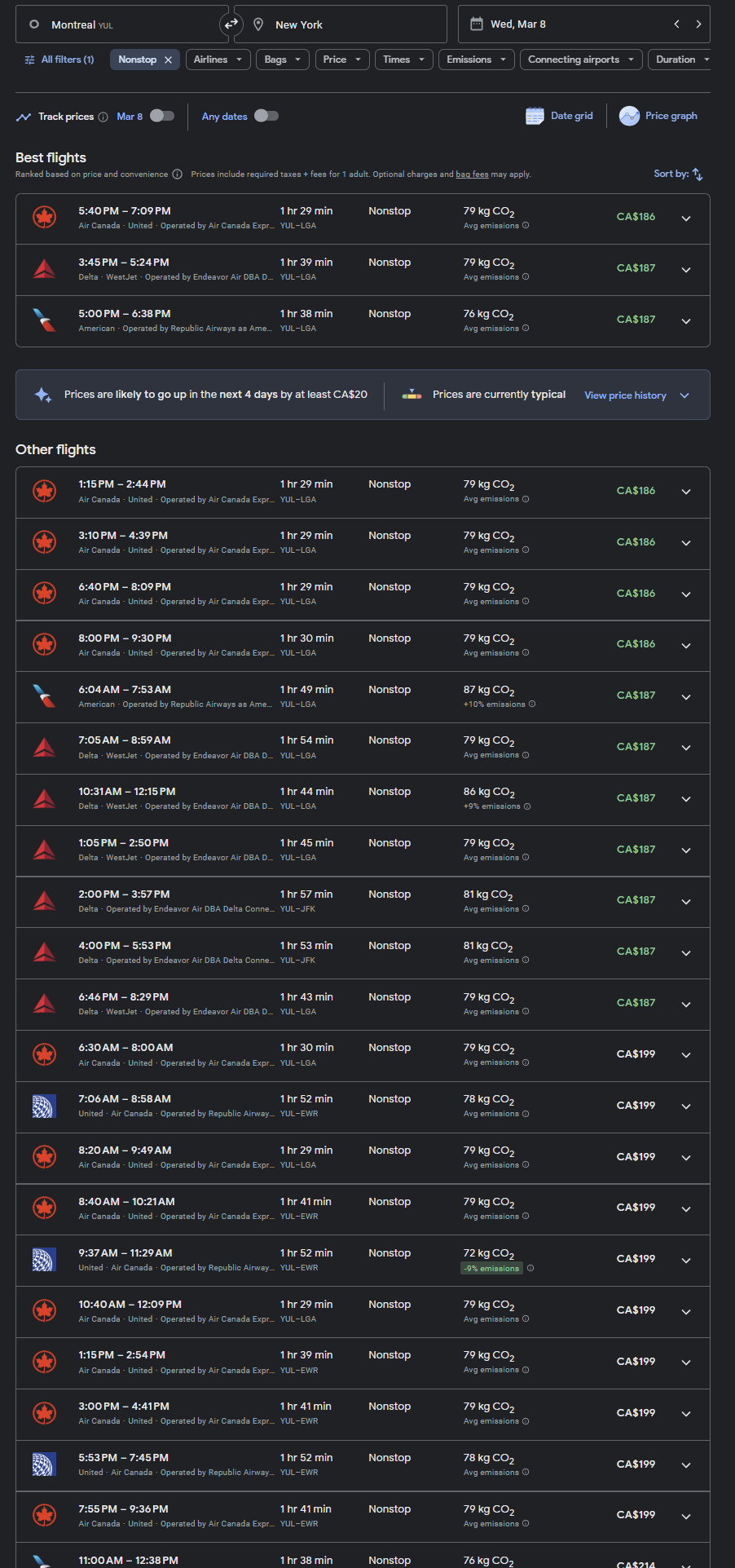
Montreal to New York Direct Flights
Step 6: Filter Out Airlines
What airlines appear in your search results? Are they mainstream carriers, or do they also include low-cost carriers? I like to always stick with mainstream carriers like Air Canada, United, American, Delta, etc., as they will always be able to offer the best rebooking options in case of a delay or cancellation. If you are flying out of an airline hub (e.g., Air Canada for Montreal), consider booking your positioning flight with them.
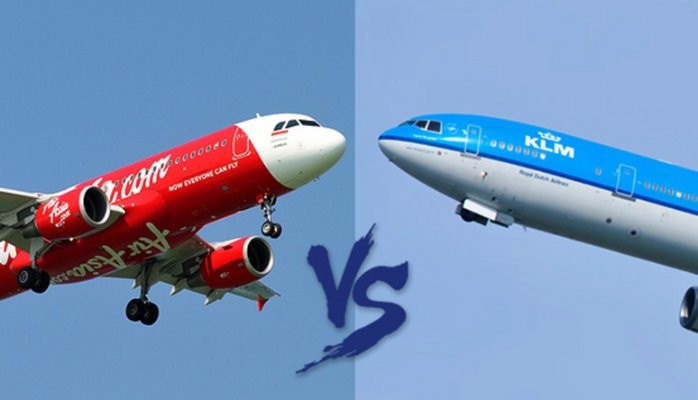
Low-Cost Air Asia vs. Full Service KLM
Are low-cost carriers really that bad? Well, it depends on the airline, and an argument can be made that the cost savings are worth the risk. This is a personal decision, but I shy away from them as they generally provide the least booking flexibility and the greatest likelihood of delays with poor protection in the event of a cancellation.

In our Google Flight search example, no low-cost carriers fly directly to New York, so there is nothing to filter out.
Step 7: Flight Schedule/Flight Frequency
 Our flight searches are nearly complete, but let’s first analyze the flights’ frequency and departure timings. Looking at direct flights from Ottawa, they all depart in the morning. Rather odd scheduling, I must say. However, the aircraft for the day’s first flight has been parked overnight, and chances are very slim that it will be delayed (other than weather/mechanical). Avoid taking the last flight of the day if possible unless you can afford an overnight delay.
Our flight searches are nearly complete, but let’s first analyze the flights’ frequency and departure timings. Looking at direct flights from Ottawa, they all depart in the morning. Rather odd scheduling, I must say. However, the aircraft for the day’s first flight has been parked overnight, and chances are very slim that it will be delayed (other than weather/mechanical). Avoid taking the last flight of the day if possible unless you can afford an overnight delay.
Step 8: On-Time Performance
The historical on-time performance of flights you are targeting to book is an interesting statistic. See below the performance difference between Air Canada and United Flights between Montreal and Newark. United is the better airline to go with:

Air Canada On-Time Performance
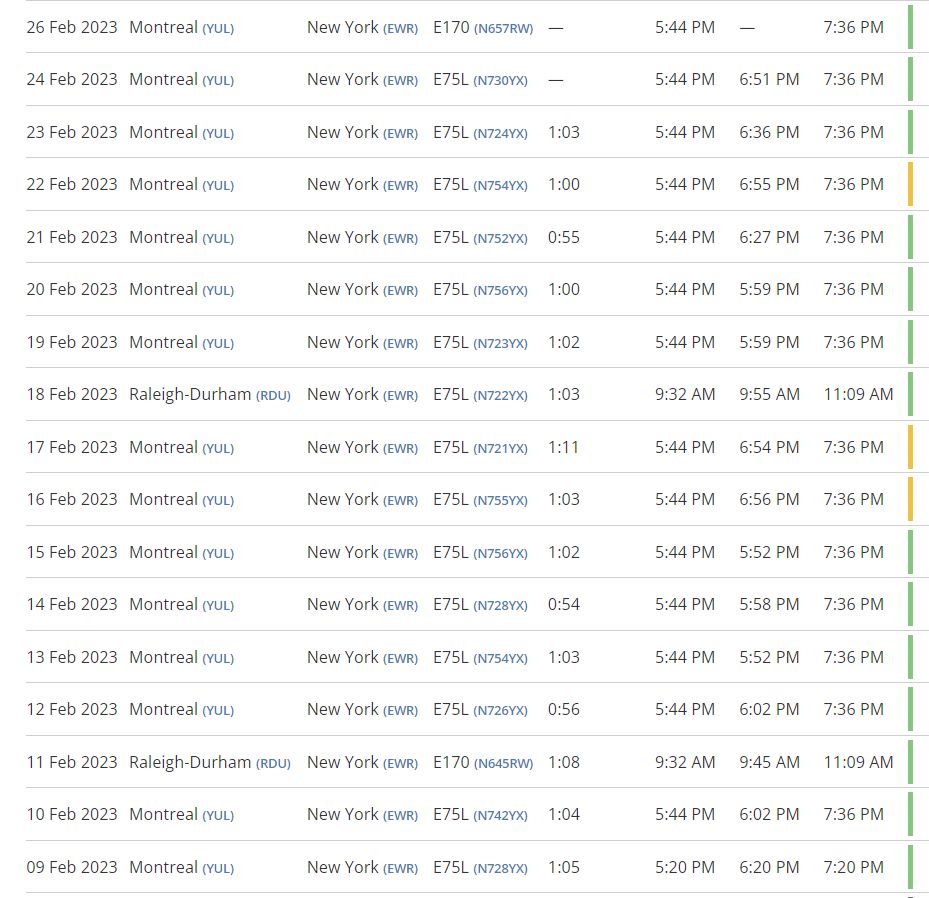
United On-Time Performance
Step 9: Terminal/Airport Change
When connecting between 2 flights, knowing if a terminal or airport change is required is imperative. This can add significant time. Getting from Newark to JFK airport can take 1-2 hours in a city like New York.
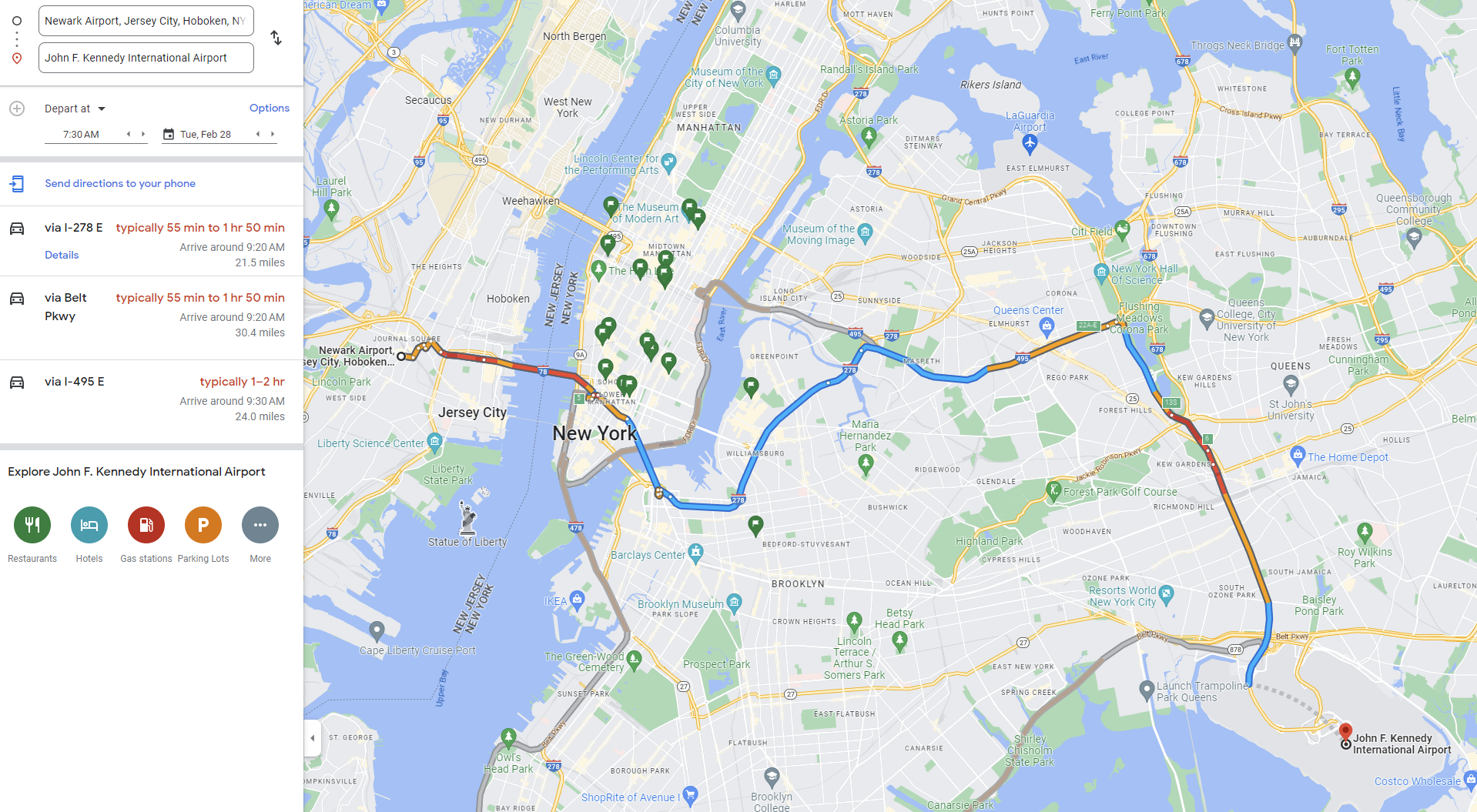 If it’s the same airport, that’s great, but more than likely, a terminal change will be required, which again takes time, especially if you have to hop on a shuttle. Chicago’s International Terminal 5 is an excellent example of this.
If it’s the same airport, that’s great, but more than likely, a terminal change will be required, which again takes time, especially if you have to hop on a shuttle. Chicago’s International Terminal 5 is an excellent example of this.
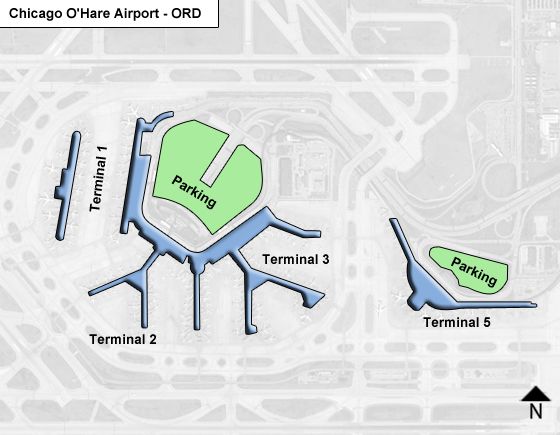
Chicago O’Hare International Terminal 5
Step 10: Connection Time
Now that we have analyzed all the factors that could affect the outcome of a positioning flight, we should have a good idea of how much time to leave between the flights, right? Wrong. Now take that estimate and double it 🙂
When figuring out how much time to leave between flights and which flight(s) to book, I have a simple rule of thumb: leave a minimum of 12 hours between the flights. If the connecting flight is in the evening, take the positioning flight early in the morning. If the connecting flight is in the morning, take the positioning flight mid-day/early evening the day prior.
Let’s go back to our example and choose the flights to book. If we assume the international flight we are connecting to in New York departs in the morning, we must leave the day before. Recall that the direct flights from Ottawa only depart in the morning, and if this schedule doesn’t work, then the next best option is to drive to Montreal and take a direct flight in the evening. The international flight departs from Newark, so let’s look at Newark as the first option, followed by LaGuardia the JFK.

The United and Air Canada flights departing at 5:53 PM and 5:40 PM seem enticing. Air Canada much more as there are additional flights later in the evening. Something goes south with this flight. For example, if the bag isn’t loaded, it will likely come on a subsequent flight.
The cash prices for both flights are very reasonable, but let’s compare booking with Air Canada Aeroplan, which is cheap, only 5.6k points but a hefty $108 in taxes. In this case, both options are nearly equivalent.
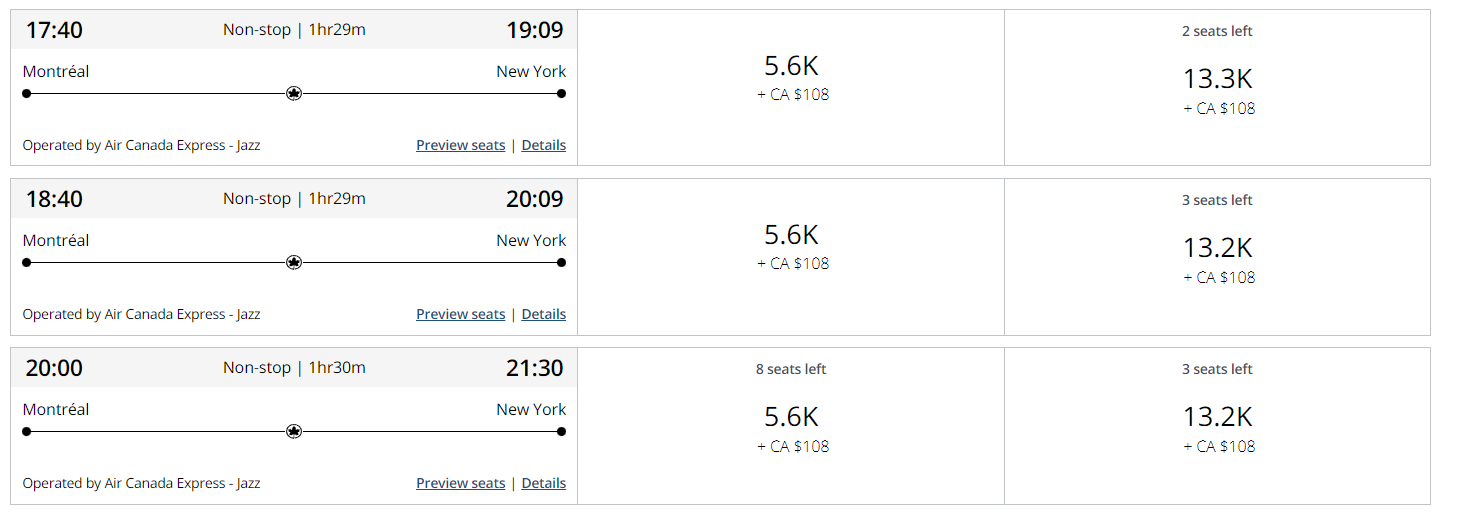
Step 11: Booking Multiple Flights
I had previously mentioned the idea of booking multiple positioning flights as backups. While some folks may feel that this is wrong and takes away seats from those otherwise traveling, I beg to differ, sorry.
There is a catch to booking multiple flights. Airline systems can notice duplicate bookings and automatically cancel one with no notification provided to you. Booking illogical flights on the same airline will be caught, but you can always book different airlines. You could book the 5:53 PM United and 8:00 PM Air Canada flights in our example above. In addition, you can also book flights the following morning as this is not considered illogical. However, there is an increased cost. For Aeroplan, the price skyrockets to 21.6k points; however, the United flight cost only jumps to $388.
The way I strategize this is to book the refundable options and then, within 24 hours, if the low-cost fares are still available, rebook and take advantage of the complimentary 24-hour cancellation policy on all fare types.
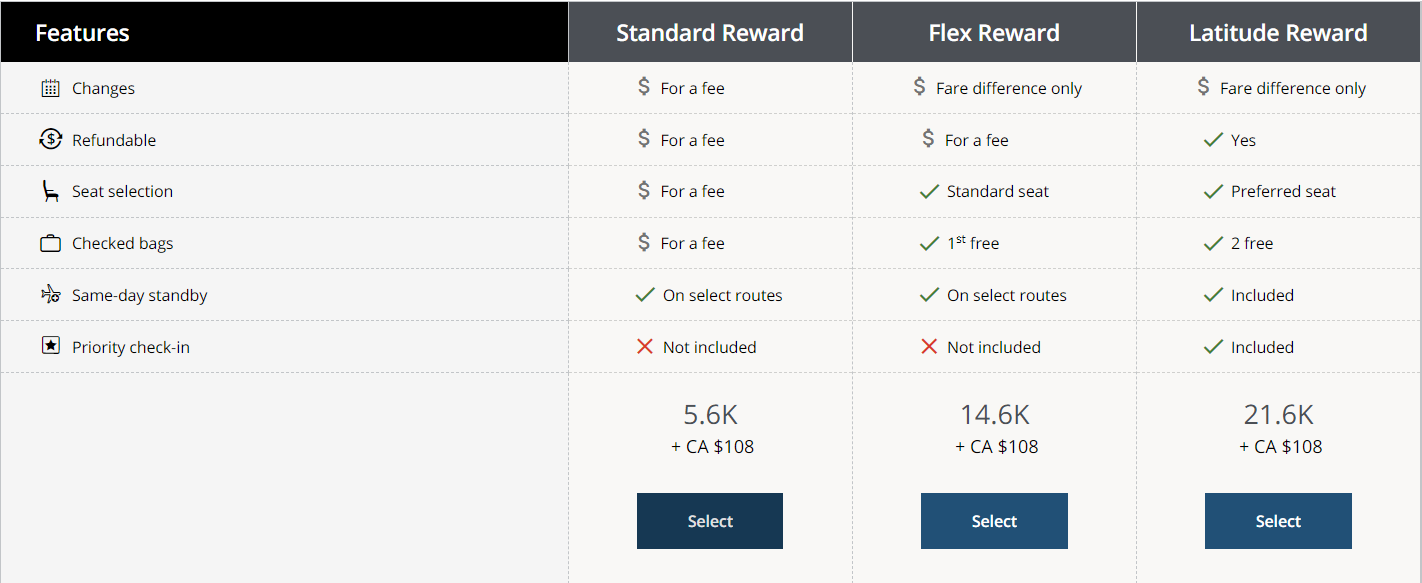

Step 12: Weather
The final factor to consider is the weather, which you can’t be sure of until about 72 hours before departure. Keep an eye on the weather, especially for storms during the winter months. If there is the certainty of a storm, you can mitigate this by leveraging one of your backup flights. But at T-24 hours, you will understand the best course of action. Armed with multiple positioning flights, you can confidently tackle any delays and cancellations.
Don’t forget to cancel all the extra bookings once you have boarded your positioning flight.
Bottom Line
We all want the best deals when traveling or flying First Class to some far-off destination, but unfortunately for most of us, these deals and flights don’t depart from our home city, and a positioning flight is needed to connect. However, significant risks are at play when two separate tickets are purchased. A good understanding of all these risks and factors should be considered.
Art is an expression of creativity, and so is booking positioning flights. Armed with knowledge on how to book these will enable you to paint the right picture of your travel plans that you can then share with your friends and family on social media and feel good that you successfully FOMO’d. Safe travels!
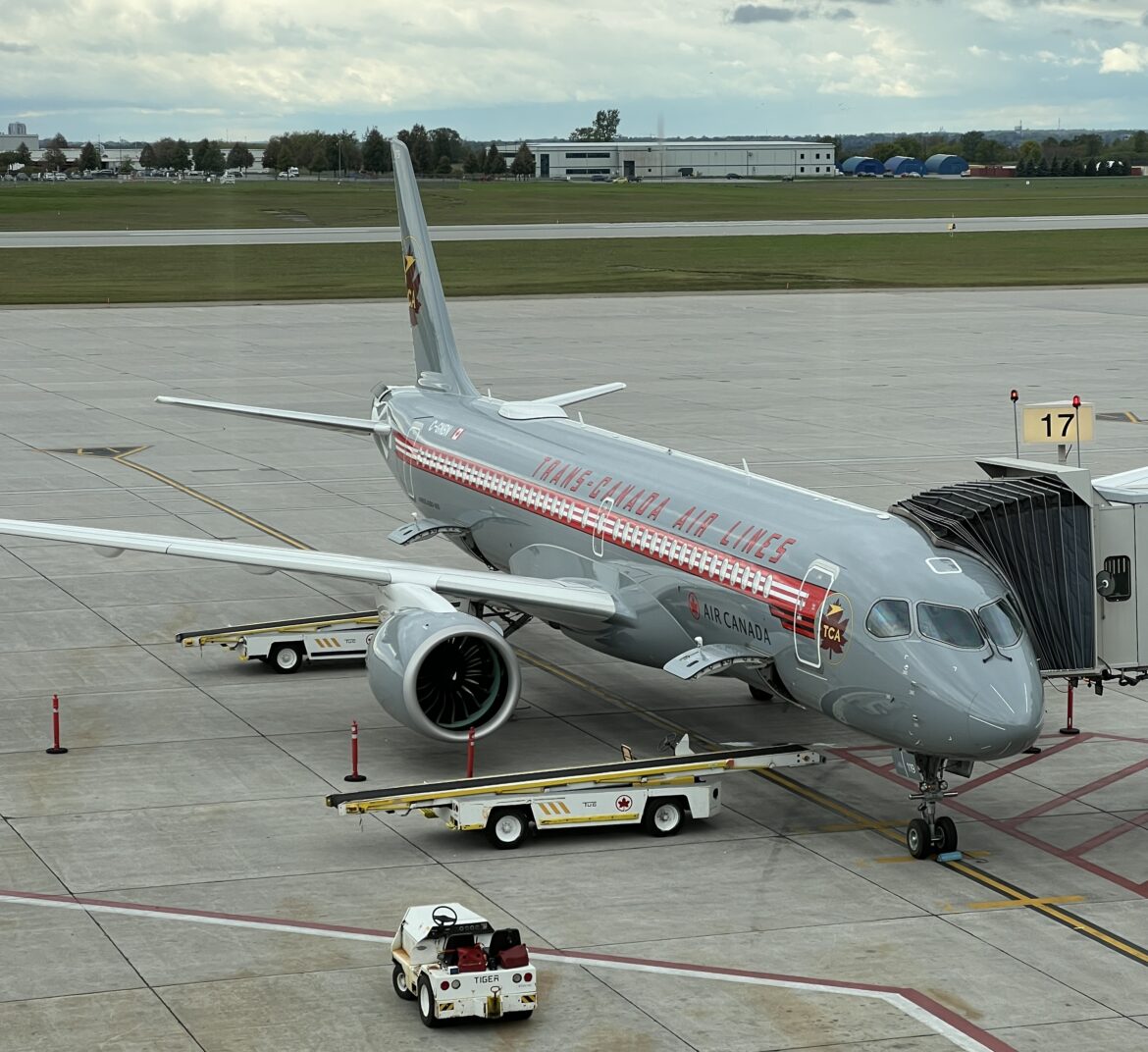
2 comments
I have booked a domestic flight from TPA to MIA and on a separate ticket a connecting international flight to AXA. There is no terminal change; am I good to proceed to my new gate or do I need to go through TSA again?
Hi James – anytime you go from domestic to int’l departure, there will be some sort of TSA check before that (even if its the same terminal). Hope you have given yourself enough time between the domestic and Int’l legs.